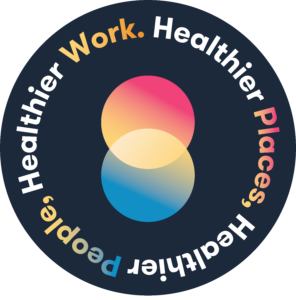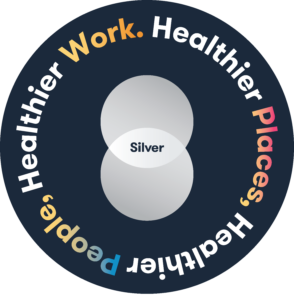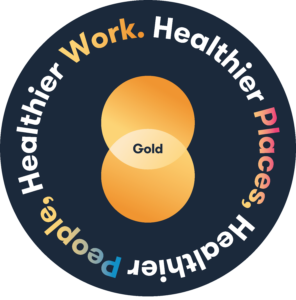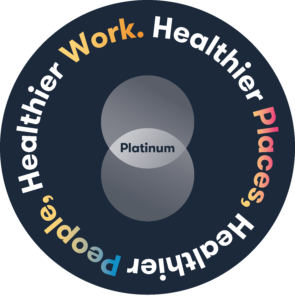How to achieve a healthier workplace?
- Six steps to healthier work
- Achieving recognition
Six steps to healthier work
Achieving a healthier workplace takes a commitment to keeping your employees healthy and well.
Six steps to healthier work
It’s more than ticking a few boxes. It is a proactive and integrated aspect of your day-to-day work across the entire organisation. And it pays off!
1. Establish workplace commitment from leadership
You need a formal organisational commitment and support from management. Then identify a key leader or leaders, develop a workplace health and wellbeing policy and assign a budget.
- Sign the Healthier Work pledge
- Read our Workplace health, safety and wellbeing policies information sheet
- Read our Simple risk management information sheet
2. Build a healthier work team
Form a workplace health team that considers human resources, WHS and wellbeing, with representatives across all levels of your business. Have your social committee and wellbeing committee report to this overarching group.
- Use our How to build a healthier work team information sheet
3. Bring what you are already doing together in a plan
Look at what your organisation is doing well. Many businesses already see the value in certain strategies, such as risk management systems or clear position descriptions. Celebrate what you’ve already achieved.
4. Identify your gaps: do a needs analysis
After identifying any existing initiatives, look at priority needs and interests of employees. Involve employees early to help formulate ideas. Also identify workplace needs.
5. Create a health and wellbeing plan
Create a plan that includes timelines and strategies you intend to use in your program. Make sure you include a start date and emphasise the support of management. Consider both immediate and longer-term implementation, as well as performance indicators to help assess your progress.
Use our workplace category sheets to explore all the practical solutions to achieve a healthier workplace. Each category information sheet offers potential strategies and actions you may apply in your organisation.
- Work design
- Work environment
- Workforce capability
- Workplace engagement
- Workplace support
- Workplace leadership
6. Manage and evaluate your plan
Undertake sound program coordination, regular communication and record keeping. Evaluate and review progress against your action plan and communicate progress and results to all employees.
Achieving recognition
As part of the Healthier Work Program, you’ll need to meet a list of annual requirements to achieve recognition and the acknowledgement that comes with it.

Recognised
- Complete the recognised-level application form
- Complete the gap assessment tool
- Commit to a healthier workplace by signing the pledge
- Engage with the Healthier Work team for information and advice

Silver
- Complete the silver-level application form
- Complete the gap assessment tool
- Commit to a healthier workplace by signing the pledge
- Provide supporting evidence that your business meets the silver-level requirements
- Participate in 1 meeting each year with the Healthier Work team

Gold
- Complete the gold-level application form
- Complete the gap assessment tool
- Commit to a healthier workplace by signing the pledge
- Provide supporting evidence that your business meets the gold-level requirements
- Participate in 1 meeting each year with the Healthier Work team

Platinum
- Complete the platinum-level application form
- Complete the gap assessment tool
- Commit to a healthier workplace by signing the pledge
- Provide supporting evidence that your business meets the platinum-level requirements
- Participate in 1 meeting each year with the Healthier Work team
Keys to success
Remember, take an integrated approach to protect, support and promote health, safety and wellbeing across all business functions. Look at both physical and mental health, and consider both people and place.
Time
Improving health and wellbeing in the workplace is not a one-dimensional process. Creating and implementing new programs and initiatives – and changing your existing culture – takes time.
Relevance
All businesses are different and face unique problems and challenges. Make the program relevant for your business and your employees. It may take a few attempts to find the right strategies that work for your organisation.
Consultation
You have an obligation to consult employees. By involving them and showing a genuine interest in what they have to say, you will be able to tailor a program that achieves greater productivity and job satisfaction.
Communication
Communication is key to a successful program. Include employees in discussions to help formulate ideas and create relevant strategies and activities for your business. It will also help keep everyone motivated in the program and informed about progress.
